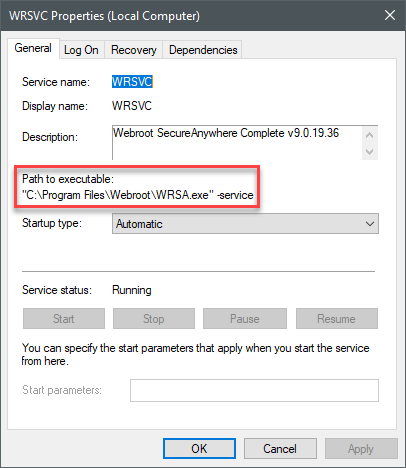Task manager says 32 bit ver. Should it be 64 bit.
I have a Surface Pro 3 running Windows 10. I installed Webroot SecureAnyWhere, version says 9.0.8.80. Task Manager says Webroot is running in 32 bit mode. Did I do something wrong?
This topic has been closed for replies.
Login to the community
No account yet? Create an account
Enter your E-mail address. We'll send you an e-mail with instructions to reset your password.









